Premium Rice and Quality Lunchboxes
Published: March 13, 2018
Here’s something a little out of the ordinary: a shop which makes fresh “bento” (lunchboxes) using rice which is milled on the premises.
Located in the backstreets of Saga close to Eitai-bashi Bridge, Yoshino Shoten, which opened way back in Meiji 36 (1903), is run by Mr. Yuji and Mrs. Yukiko Yoshino. The delightful, friendly couple operate their business on strictly-demarcated lines; she is in charge of making the lunch boxes, whilst he looks after the milling and sale of rice.
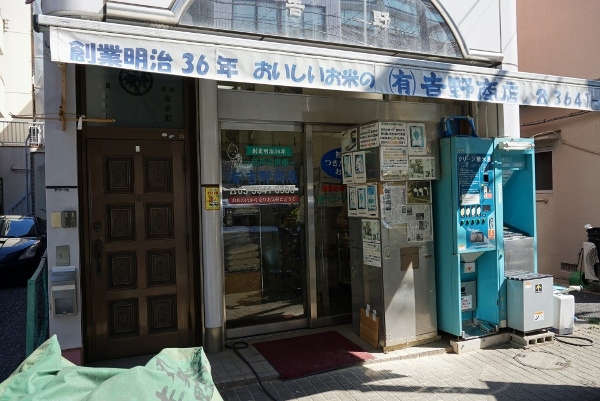
Working alone in a room at the rear of the premises, Mrs. Yoshino starts at 6:00 a.m. every morning preparing the ingredients for the day’s “onigiri” (rice balls) and lunchboxes. The lunchboxes go on sale from around 11:00 a.m. and she usually finishes her side of the work by 12:30 p.m., or earlier if the rice balls and lunchboxes sell out.
Only the highest quality rice (“Toku A”) is used to make the rice balls, and Mrs. Yoshino told me boiling the rice at 60 centigrade produces the best results. I watched as she deftly took the boiled rice and placed it in a triangular mould, into which she inserted one of a selection of fillings: “umeboshi” (pickled plum), a piece of “sake” (salmon), “tarako” (cod roe), “katsuobushi” (dried shaved bonito) or “tsunamayo” (tuna and mayonnaise).
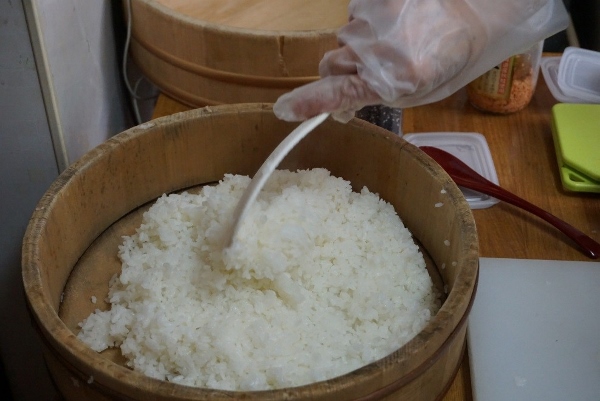
She then extracts the rice ball from the mould and gives it a slight sprinkling of salt, before wrapping it in a piece of “nori” (dried roasted seaweed) and sealing it in plastic. She handed me a salmon rice ball and urged me to eat it whilst it was warm. At between 115gms and 200gms, it looked to me larger than the rice balls usually on sale at convenience stores, and the rice felt fluffier and tastier. It was delicious and went down a treat at 10:15 in the morning.
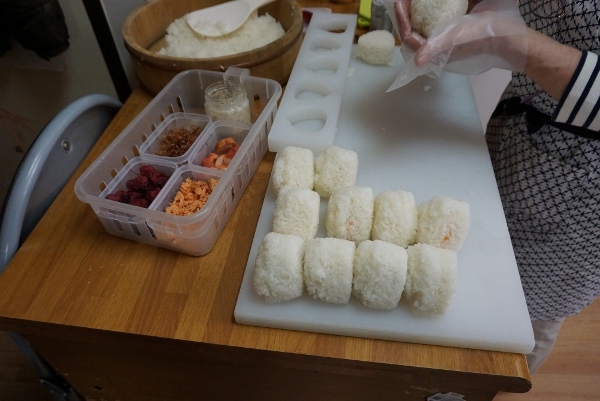
Mrs. Yoshino told me the umeboshi rice balls are the number one favourite with her customers. Her mother now lives down in Kagoshima, but still makes umeboshi and sends them up to Tokyo to fill the rice balls.
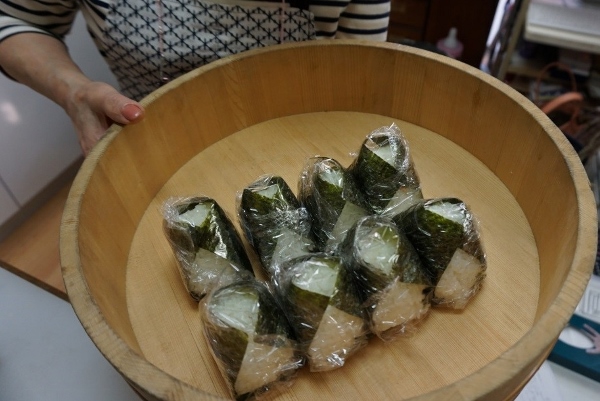
Besides rice balls Mrs. Yoshino creates around 30 lunchbox sets, which consist of 2 rice balls, plus “okazu” (a side dish with assorted contents to go with rice – see photographs below) and “miso shiru” (miso soup).
The day I was there, Yoshino Shoten’s “okazu” menu selection consisted of “kara-age” (fried chicken), “aji fry” (deep-fried horse mackerel),
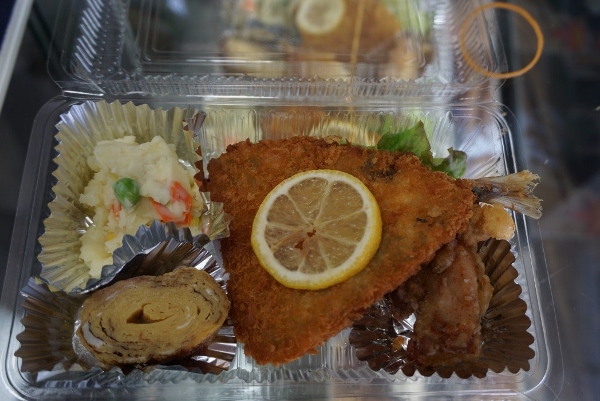
… “harumaki” (spring roll),
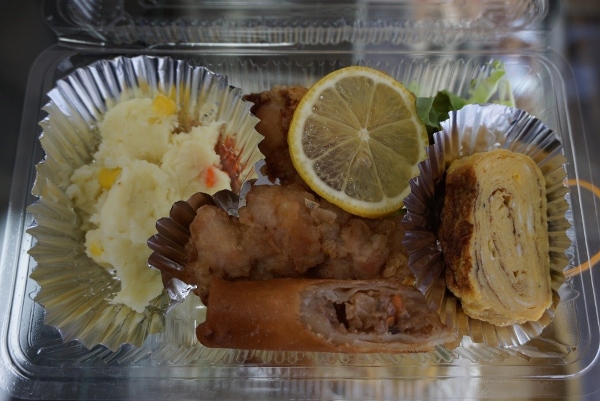
… “korokke” (croquette), or
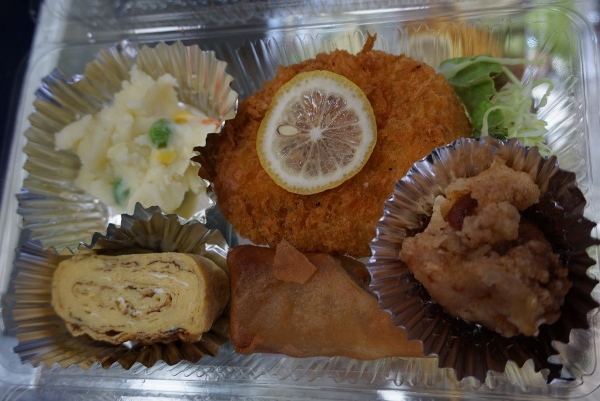
… “sake” (salmon)
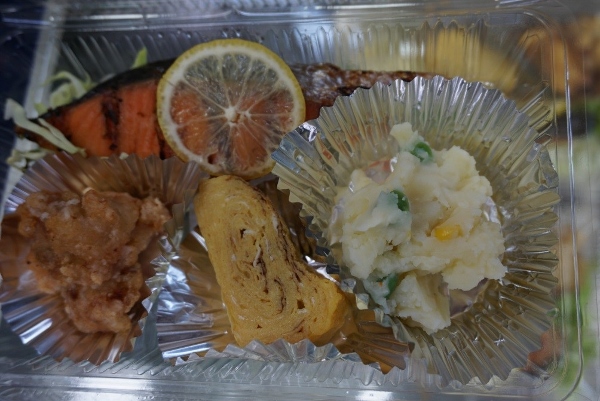
A side pack of “takikomi gohan” (seasoned cooked rice) was also available; this day it contained “asari” (clams).

The lunchbox customers are a varied group made up of taxi drivers, who call in on breaks between fares, local residents, and business people. Prices for rice balls are mostly 130 yen each, whilst the pack of takikomi gohan goes for 150 yen and the okazu pack for 350 yen. However, a set lunch, which varies, but principally consists of 2 rice balls, okazu and miso soup, sells for 500 yen. This seems a very good deal and makes a tasty and filling meal.
It was then the turn of Mr. Yoshino to talk me through the rice milling process. One side of the main area of this narrow shop is stacked high with 30kg bags of genmai (brown rice). They come with delightful-sounding names, such as “hitomebore” (love at first sight), “tsuyahime” (glossy princess), and “seiten no hekireki” (a bolt from the blue).
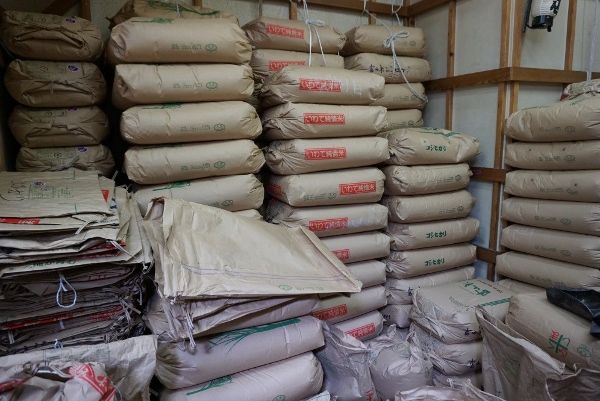
The other side of the shop is dominated by a large complicated-looking machine, and I watched as Mr. Yoshino poured in the brown rice at one end,

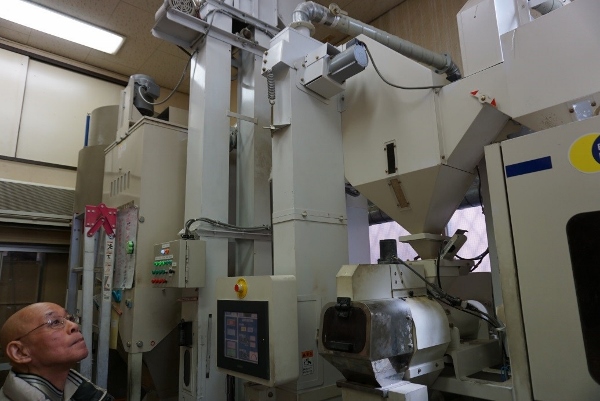
…to be riddled, shaken and sifted by this ear-deafening machine. Parts of the rice were ejected at different stages of the process.
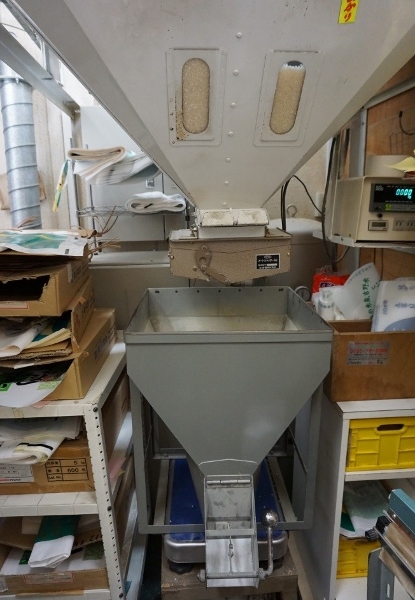
Nothing is wasted: some bits go to make “kome-nuka” (rice bran), whilst others are used as ingredients in beer making (yes!), and some goes into “genmai-cha” (brown rice tea). What emerges at the other end is white rice, which is bagged in 5kg, 10kg and 30kg bags and sold to customers. I had never really thought about how my rice got into the packs I buy at the supermarket and I found the whole process fascinating.
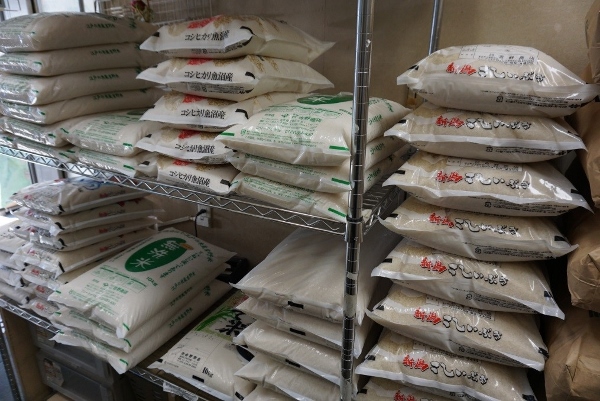
While this din was going on, Mrs. Yoshino wisely closed the door to her kitchen to keep out the sound, and continued preparing rice balls and lunchboxes.
Towards the end of my visit the Yoshino’s son, Katsuya, dropped in. He manages Yoshino Shoten’s other shop nearby; one of only 3 shops in Tokyo which, on behalf of other rice shops, process “musenmai” (rinse-free rice), doing away with the need to wash rice before cooking. It is pleasing to see that this 3rd generation business may well be passed on to the 4th generation.
And with the sound of the rice mill still ringing in my ears I cycled home to tuck into a tasty fried chicken lunchbox and a filling portion of clams in rice.
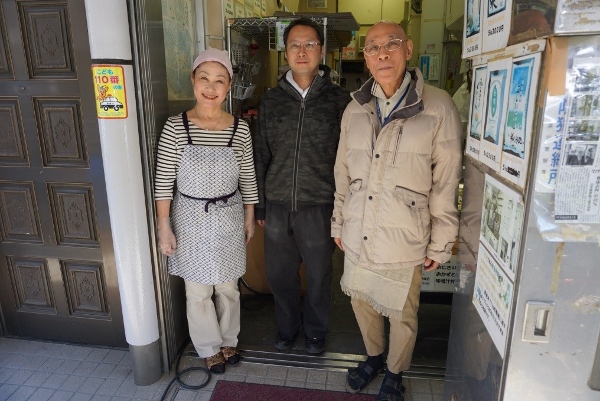
Story and Photos by Jeremy Hutchinson


